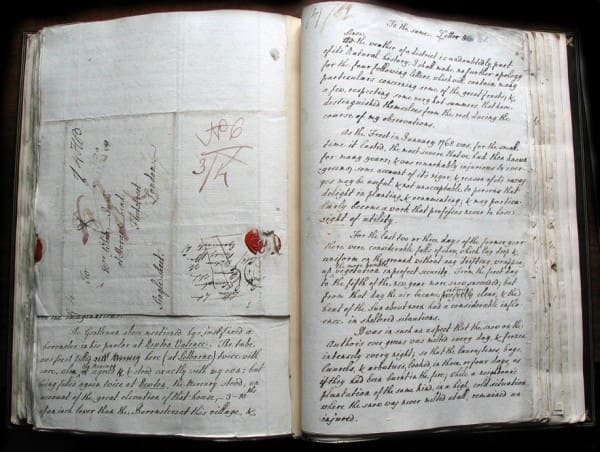
This article below is fascinating, giving insight into the very first impressions of the Chinese dog we now call the “Chow Chow” at it’s initial discovery in the early 1780s. It amazes me that in comparison…. the Giant Panda was only discovered by westerners in 1869 with both animals being from China
The first reliable mention of the Chow Chow breed other than Marco Polo’s observation of Chinese sled dogs, was made in the Natural History of Selbourne in the County of Southampton by Reverend Gilbert White. He describes in accurate detail the import of a pair of puppies from Canton by a young gentleman of the East India Company. This book is made up of letters written to Thomas Pennant, esquire, and and the Honourable Daines Barrington. Reverend White was reporting in his letters the many animals and birds he encountered in his travels.

In the index to his work, he lists letter LVIII (58) Circa Early 1780s under “D” -Dogs Chinese from Canton and is addressed to the Honourable Daines Barrington
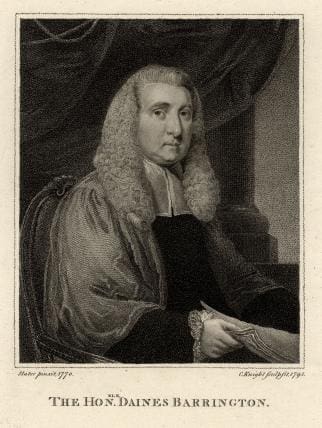
“My near neighbour, a young gentleman in the service of the East-India Company, has brought home a dog and a bitch of the Chinese breed from Canton; such as are fattened in that country for the purpose of being eaten: they are about the size of a moderate spaniel; of a pale yellow colour, with coarse bristling hairs on their backs; sharp upright ears, and peaked heads, which give them a very fox-like appearance. Their hind legs are unusually straight, without any bend at the hock or ham, to such a degree as to give them an aukward gait when they trot. When they are in motion their tails are curved high over their backs like those of some hounds, and have a bare place each on the outside from the tip midway, that does not seem to be matter of accident, but somewhat singular.
Their eyes are jet-black, small, and piercing; the insides of their lips and mouths of the same colour, and their tongues blue. The bitch has a dew-claw on each hind leg; the dog has none. When taken out into a field the bitch showed some disposition for hunting, and dwelt on the scent of a covey of partridges till she sprung them, giving her tongue all the time. The dogs in South America are dumb; but these bark much in a short thick manner, like foxes; and have a surly, savage demeanour like their ancestors, which are not domesticated, but bred up in sties, where they are fed for the table with rice-meal and other farinaceous food. These dogs, having been taken on board as soon as weaned, could not learn much from their dam; yet they did not relish flesh when they came to England. In the islands of the pacific ocean the dogs are bred up on vegetables, and would not eat flesh when offered them by our circumnavigators.
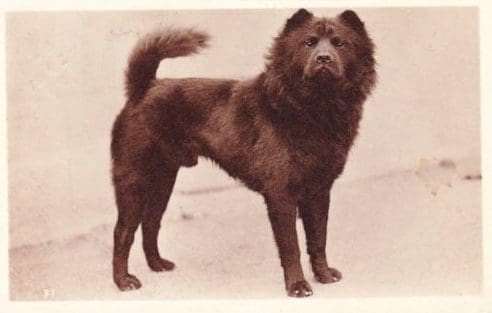
We believe that all dogs, in a state of nature, have sharp, upright fox-like ears; and that hanging ears, which are esteemed so graceful, are the effect of choice breeding and cultivation. Thus, in the Travels of Ysbrandt Ides from Muscovy to China, the dogs which draw the Tartars on snow-sledges near the river Oby are engraved with prick-ears, like those from Canton. The Kamschat|dales also train the same sort of sharp-eared peak-nosed dogs to draw their sledges; as may be seen in an elegant print engraved for Captain Cook’s last voyage round the world.
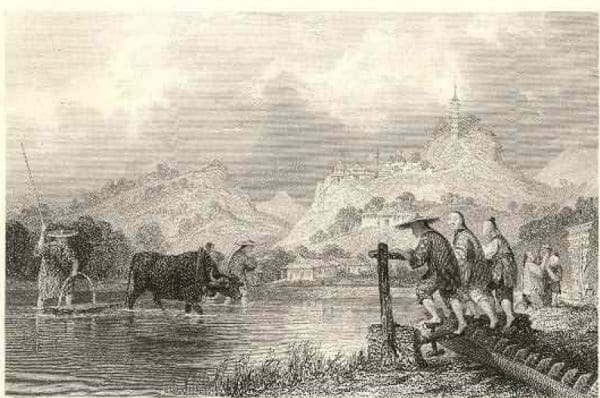
Now we are upon the subject of dogs, it may not be impertinent to add, that spaniels, as all sporsmen know, though they hunt partridges and pheasants as it were by instinct, and with much delight and alacrity, yet will hardly touch their bones when offered as food; nor will a mongrel dog of my own, though he is remarkable for finding that sort of game. But, when we came to offer the bones of partridges to the two Chinese dogs, they de|voured them with much greediness, and licked the platter clean.
No sporting dogs will flush woodcocks till inured to the scent and trained to the sport, which they then pursue with vehemence and transport; but then they will not touch their bones, but turn from them with abhorrence, even when they are hungry.
Now, that dogs should not be fond of the bones of such birds as they are not disposed to hunt is no wonder; but why they reject and do not care to eat their natural game is not so easily accounted for, since the end of hunting seems to be, that the chase pursued should be eaten. Dogs again will not devour the more rancid water-fowls, nor indeed the bones of any wild-fowls; nor will they touch the foetid bodies of birds that feed on offal and garbage: and indeed there may be somewhat of providential instinct in this circumstance of dislike; for vulturesc, and kites, and ravens, and crows, &c. were intended to be messmates with dogsd over their carrion; and seem to be appointed by Nature as fellow-scavengers to remove all cadaverous nuisances from the face of the earth.”

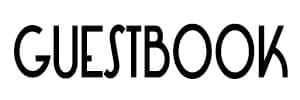
Sorry to do this but Gilbert White was only born in 1720 and a look at the book you are quoting would suggest that this letter was probably written in late 1781 or early 1782. The book was published at the end of 1788 but dated 1789. Still way earlier than the giant panda tho!
Thank you SO much Lee for pointing out the error on that date. I acquired my info from an old article and didn’t put 2 and 2 together on those dates. I really appreciate the heads up. I will go back and double check the exact date of the publication but for now I am stating it was early 1780’s